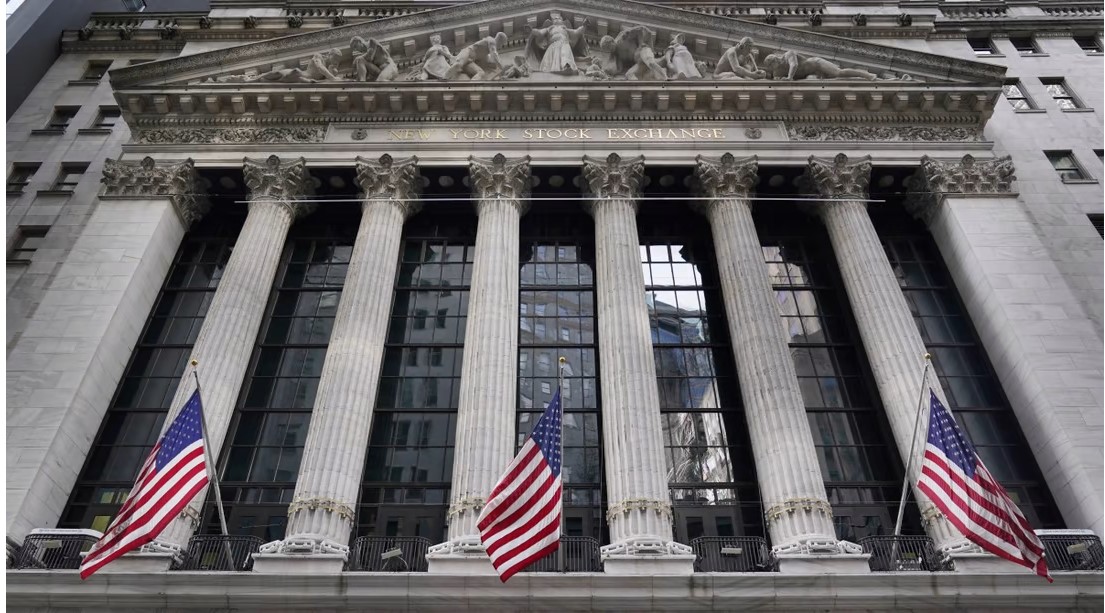WALL Street slid on Friday to its deepest daily losses since 2020 as Amazon slumped following a gloomy quarterly report, and as the biggest surge in monthly inflation since 2005 spooked investors already worried about rising interest rates.
Amazon.com Inc tumbled 14.05% in its steepest one-day drop since 2006, leaving the widely held stock near two-year lows. Late on Thursday, the e-commerce giant delivered a disappointing quarter and outlook, swamped by higher costs.
The Dow Jones Industrial Average declined 2.77% to 32,977.21 points; the, S&P 500 edged down 3.63% to end the session at 4,131.93 points while the Nasdaq nosedived 4.17% to 12,334.64 point.
Apple Inc, the world’s most valuable company, dropped 3.66% after its disappointing outlook overshadowed record quarterly profit and sales.
All 11 S&P 500 sector indexes fell, led lower by a 5.9% slide in Consumer Discretionary and a 4.9% drop in Real Estate.
The S&P 500 logged it largest one-day decline since June 2020. The Nasdaq’s decline was its largest since September 2020.
Downbeat results and worries about aggressive monetary policy tightening by the US Federal Reserve have hammered megacap technology and growth stocks this month.
The Fed is set to meet next week with traders betting on a 50-basis-point rate hike to combat surging inflation.
Ahead of the weekend and the Fed meeting next week, “people are clearing the decks. The disappointing guidance from Apple and Amazon and a few other companies set the stage yesterday for today to be weak and it accelerated as we ended out the day,” said Peter Tuz, President of Chase Investment Counsel in Charlottesville, Virginia.
The Nasdaq has lost about 13% in April, its worst monthly performance since the global financial crisis in 2008. The S&P 500 has fallen 13% so far in 2022, its steepest four-month decline to start any year since 1939.
Adding to fears on Wall Street, data showed the personal consumption expenditures price index – the Fed’s favoured measure of inflation – shot up 0.9% in March after climbing 0.5% in February.
Signs of aggressive monetary policy tightening, the Ukraine war and China’s COVID-19 lockdowns have fuelled fears of an economic slowdown. Data on Thursday showed the US economy unexpectedly contracted in the first quarter.
For the week, the S&P 500 lost 3.3%, the Nasdaq shed 3.9% and the Dow declined 2.5%.
The S&P 500 has gained or lost 2% or more in a day some 33 times so far in 2022 compared to 24 such days in all of 2021.
Exxon Mobil Corp slipped 2.24% after it took a US$3.4 bil write-down due to its exit from Russia. Chevron Corp dropped 3.16% after its first-quarter profit underwhelmed.
The first-quarter earnings season overall has been better than expected so far. Nearly half of the S&P 500 companies have reported through Thursday with 81% of them having topped Wall Street’s expectations. Typically, only 66% beat estimates, according to Refinitiv data.
Declining issues outnumbered advancing ones on the NYSE by a 3.91-to-1 ratio; on Nasdaq, a 2.85-to-1 ratio favoured decliners.
The S&P 500 posted two new 52-week highs and 47 new lows; the Nasdaq Composite recorded 13 new highs and 385 new lows.
Volume on US exchanges was 12.4 billion shares compared with an 11.8 billion average over the last 20 trading days. – April 30, 2022










